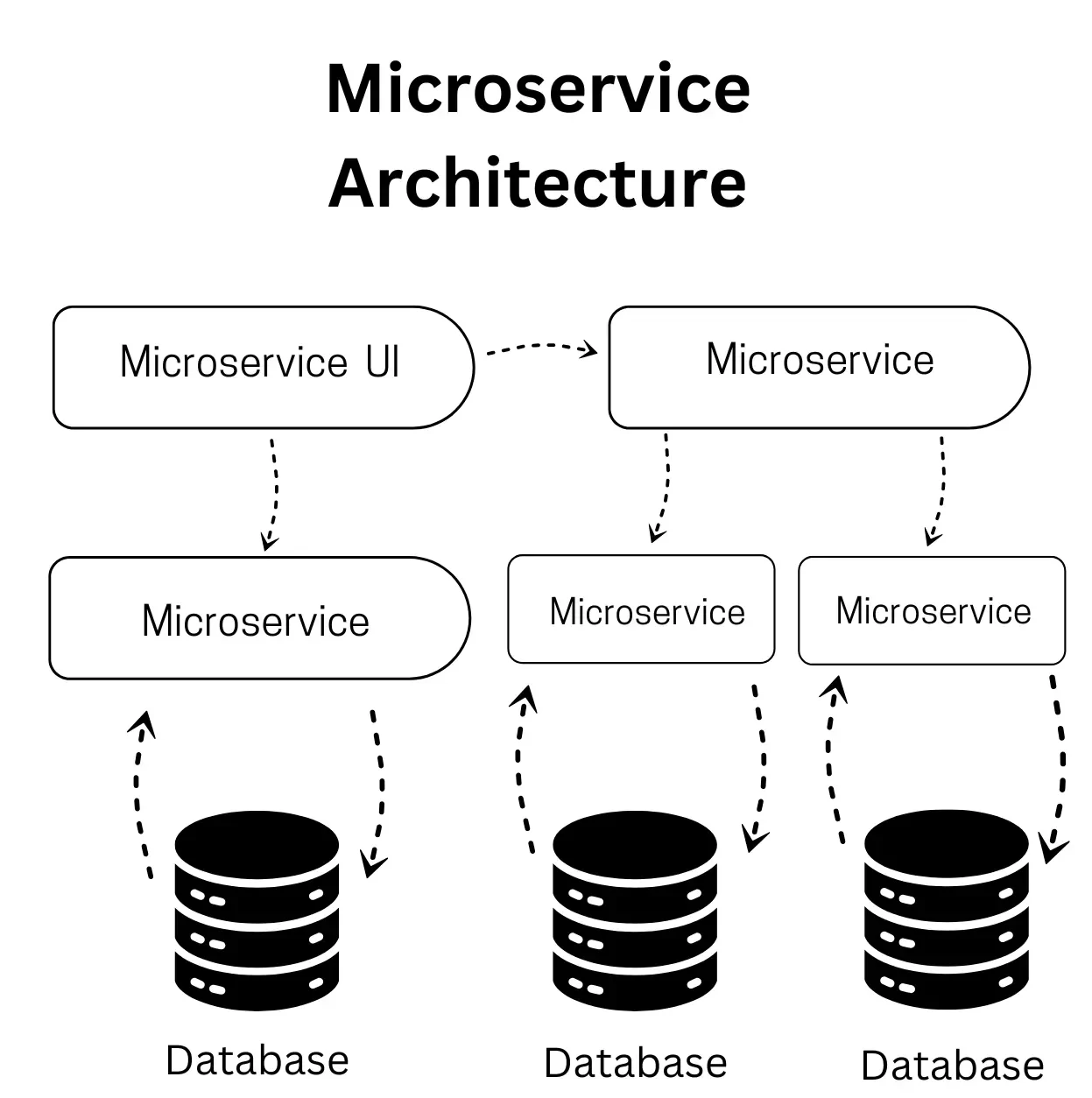
Building software that is both scalable and flexible has become a fundamental goal for businesses. Microservices architecture is the game-changing design approach that is making waves in the realm of custom software development. It has emerged as a solution to the growing complexity of software systems, offering better adaptability, faster development cycles, and an overall streamlined approach to designing software for modern needs.
This blog dives into the benefits, challenges, and real-world applications of microservices architecture, helping you understand why it has become the go-to strategy for developers and businesses alike.
What is Microservices Architecture?
Microservices architecture is a software design paradigm where a system is composed of small, independent services that work together to deliver functionality. Each service, or “microservice,” performs a specific task and communicates with other services through well-defined APIs. This approach breaks down a monolithic application into modular components, making it easier to manage and scale.
Unlike traditional monolithic applications, microservices focus on:
- Decentralized Development: Each service is developed and maintained independently.
- Focused Functionality: Services perform a single, dedicated function, such as user authentication or payment processing.
- Autonomy: Microservices can be deployed, updated, or scaled individually.
The Role of Microservices in Custom Software Development
Custom software development thrives on meeting unique business needs, and microservices architecture perfectly aligns with this goal. By breaking applications into smaller services, developers can focus on delivering personalized, modular solutions.
Key Benefits:
- Faster Development Cycles: Teams can work on individual services concurrently, reducing time-to-market.
- Enhanced Scalability: Services can scale independently based on demand, optimizing resource usage.
- Flexibility in Technology: Developers can use different programming languages or tools for each service.
- Ease of Maintenance: Smaller, isolated services are easier to debug and update without affecting the entire system.
How Microservices Architecture Solves Challenges in Software Design
Traditional software development often faces issues like rigidity and bottlenecks during scaling. Microservices address these challenges by introducing flexibility and resilience.
Solving Scalability Issues
Scaling a monolithic application often involves scaling the entire system, even if only one component experiences high demand. With microservices, only the affected service needs to be scaled. For instance, an e-commerce platform can scale its payment gateway separately during a sale event.
Improving Fault Isolation
In a monolithic system, a failure in one module can cascade and crash the entire application. Microservices isolate failures within individual services, reducing the risk of complete system outages.
Why Microservices Architecture is Gaining Popularity
Several trends are driving the adoption of microservices in software development:
- Cloud Computing: Platforms like AWS and Azure provide seamless tools for deploying and managing microservices.
- DevOps Practices: Continuous integration and delivery pipelines complement the modular nature of microservices.
- Containerization: Tools like Docker and Kubernetes simplify the deployment of individual services.
- Demand for Agility: Businesses need systems that adapt quickly to changing market conditions.
Implementing Microservices Architecture
Adopting microservices requires a shift in mindset, tools, and processes. Here’s how businesses can approach it:
Define Service Boundaries
Identify the distinct functionalities of your application and break them into individual services. For example:
- Authentication Service
- Inventory Management Service
- Notification Service
Choose the Right Tools
Leverage containerization platforms like Docker, orchestration tools like Kubernetes, and API gateways to manage communication between services.
Focus on Communication
Efficient communication is critical for microservices. Use lightweight protocols like REST or gRPC for inter-service communication.
The Challenges of Microservices Architecture
While microservices offer incredible benefits, they come with their own set of challenges:
- Increased Complexity: Managing multiple services can become overwhelming without proper tools.
- Network Latency: More inter-service communication can lead to latency issues.
- Data Consistency: Ensuring consistency across distributed services can be tricky.
How to Overcome These Challenges
- Use monitoring tools like Prometheus or Datadog to track service performance.
- Implement caching mechanisms to reduce latency.
- Employ distributed databases like Cassandra or MongoDB to manage data consistency.
Case Studies: Microservices in Action
Netflix
Netflix shifted from a monolithic architecture to microservices to handle millions of global users. The result? Improved system reliability and faster feature deployments.
Amazon
Amazon uses microservices to power its e-commerce platform, enabling seamless scalability and independent updates to critical services like recommendations and order processing.
Future Trends in Microservices Architecture
The rise of microservices is paving the way for new innovations:
- Serverless Computing: Combining microservices with serverless platforms for event-driven, cost-efficient solutions.
- AI-Powered Orchestration: Automating service deployment and scaling decisions.
- Edge Computing: Deploying microservices closer to end-users for faster response times.
FAQs
What are the main advantages of microservices architecture?
Microservices offer scalability, faster development cycles, flexibility in technology use, and fault isolation, making them ideal for modern software needs.
How do microservices differ from monolithic architecture?
Monolithic applications are built as a single unit, while microservices break the system into smaller, independent services.
Is microservices architecture suitable for all businesses?
Microservices are best suited for large, complex systems with high scalability needs. Smaller projects may benefit from simpler architectures.
What tools are essential for implementing microservices?
Tools like Docker, Kubernetes, API gateways, and monitoring platforms like Prometheus are crucial for managing microservices.
Can microservices architecture reduce software development costs?
While initial implementation can be costly, microservices save costs in the long term by enabling faster updates, reduced downtime, and efficient scaling.
What industries benefit most from microservices?
E-commerce, streaming services, finance, and healthcare are among the industries that greatly benefit from microservices architecture.
Conclusion
The rise of microservices architecture marks a transformative shift in custom software development. By breaking down monolithic systems into agile, modular services, businesses can achieve unparalleled scalability, faster development cycles, and better system reliability. Despite challenges, the benefits of this approach far outweigh the downsides, making it a cornerstone of modern software design.


